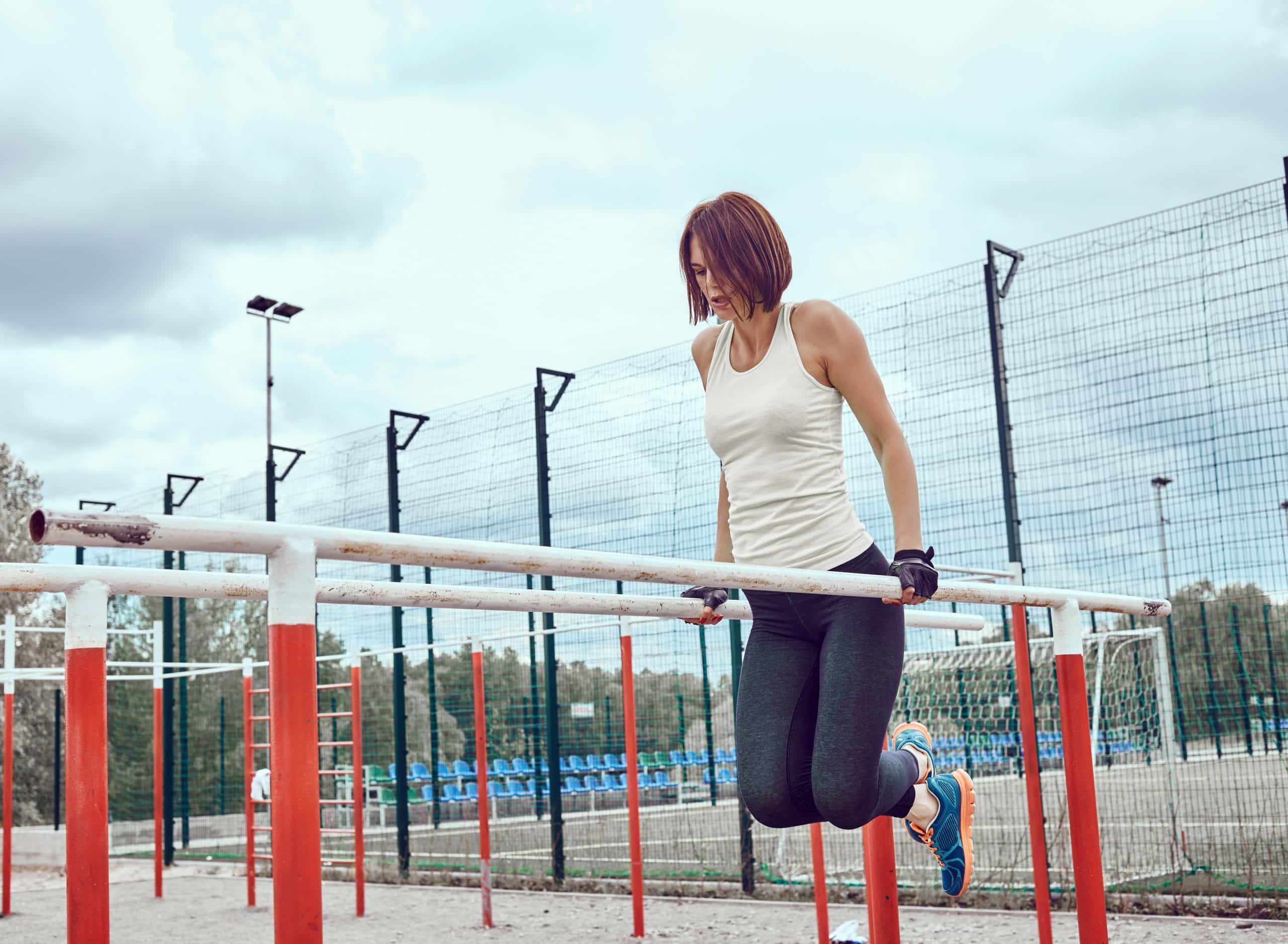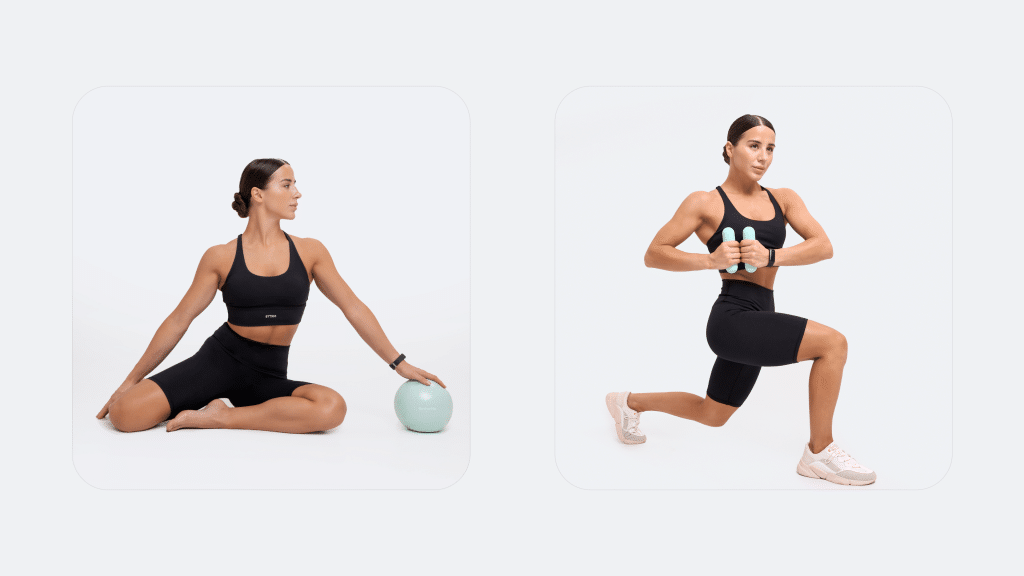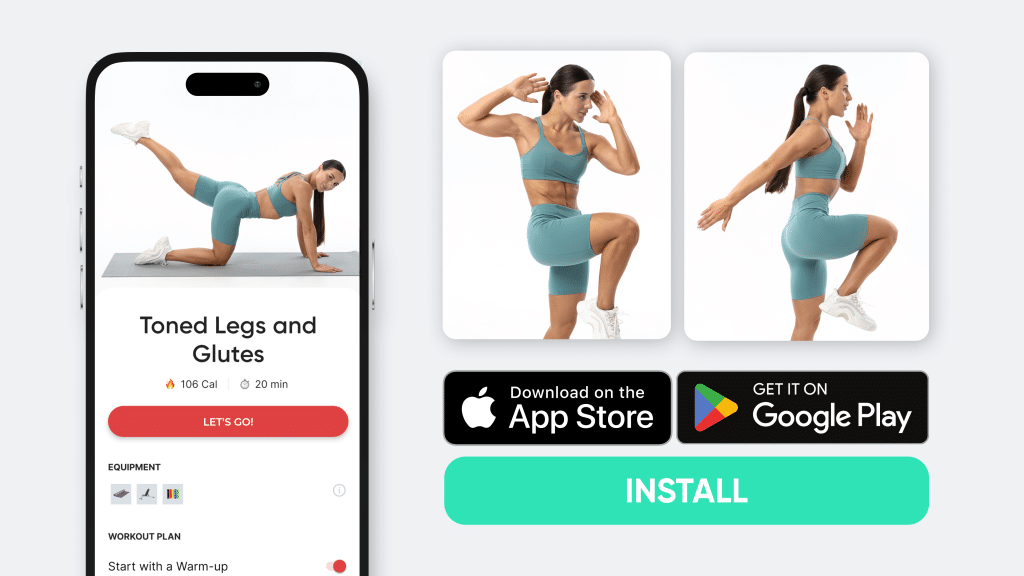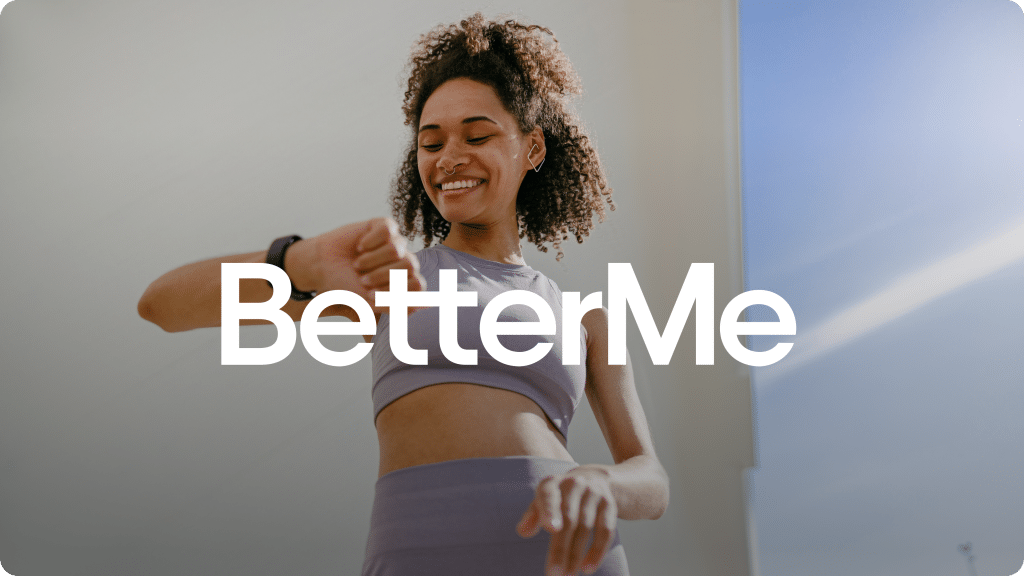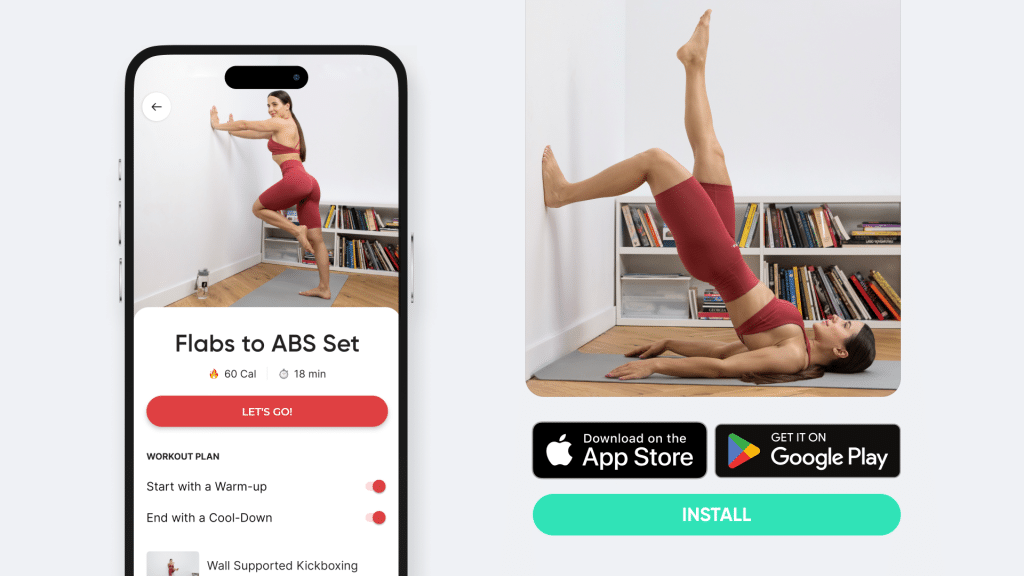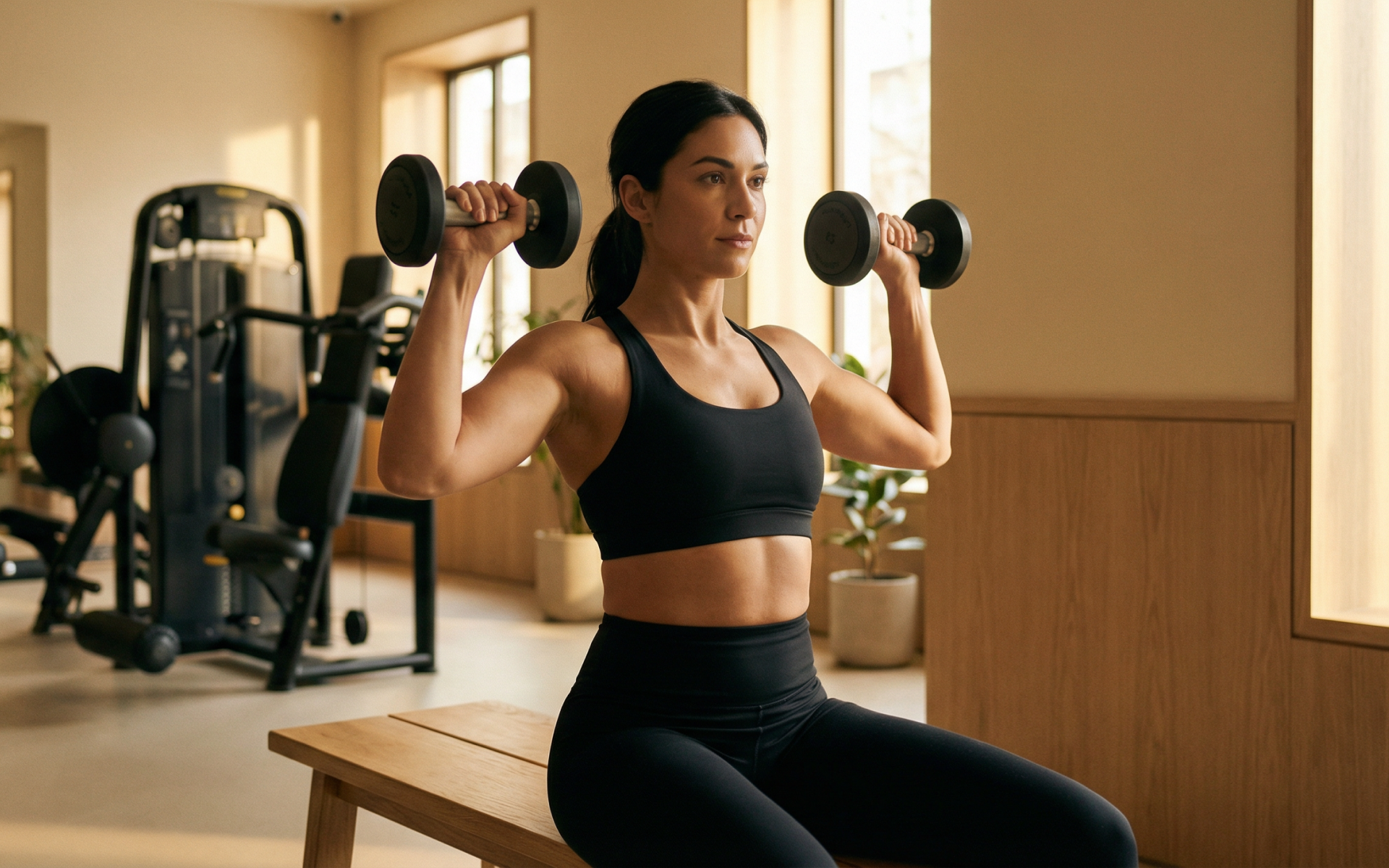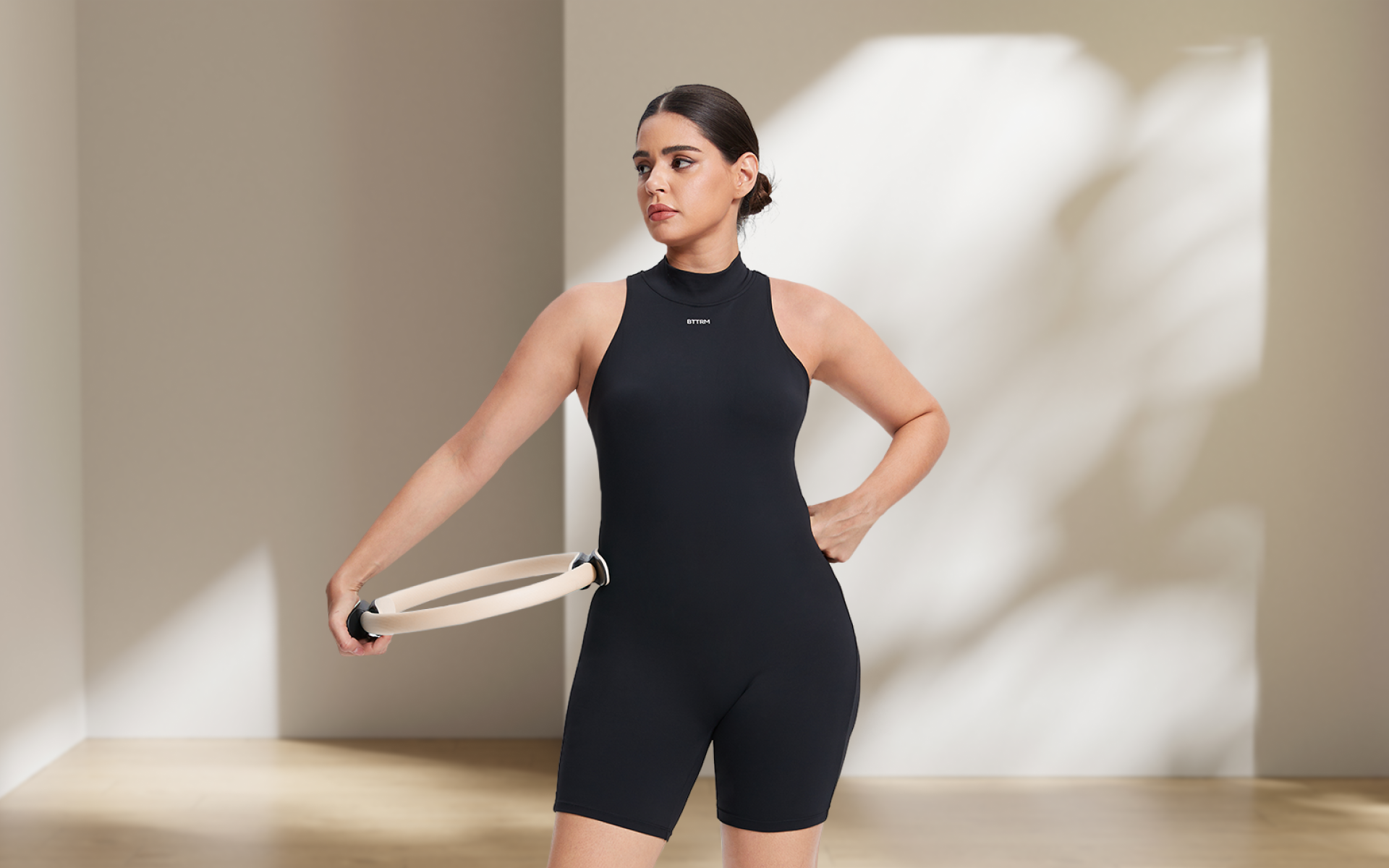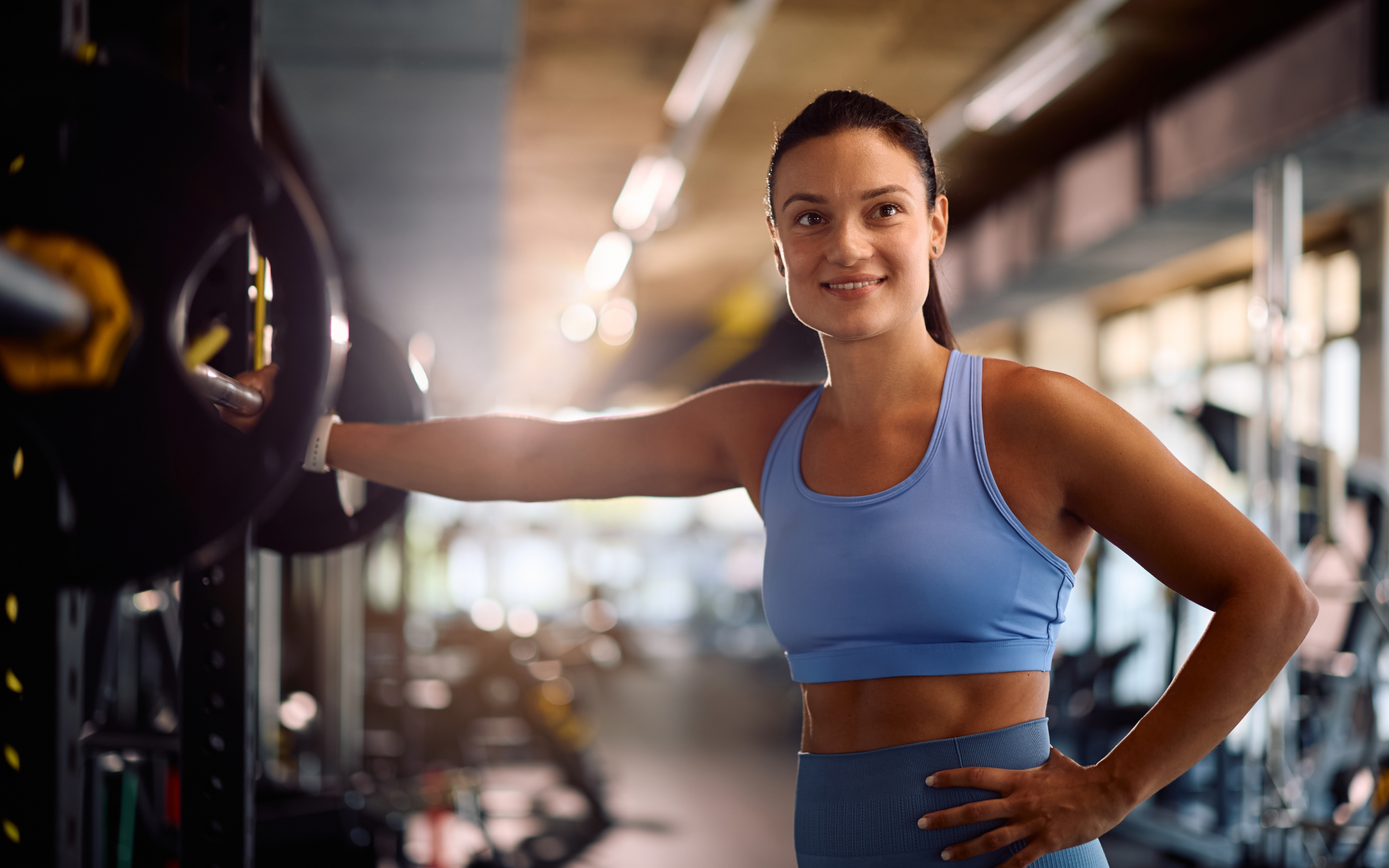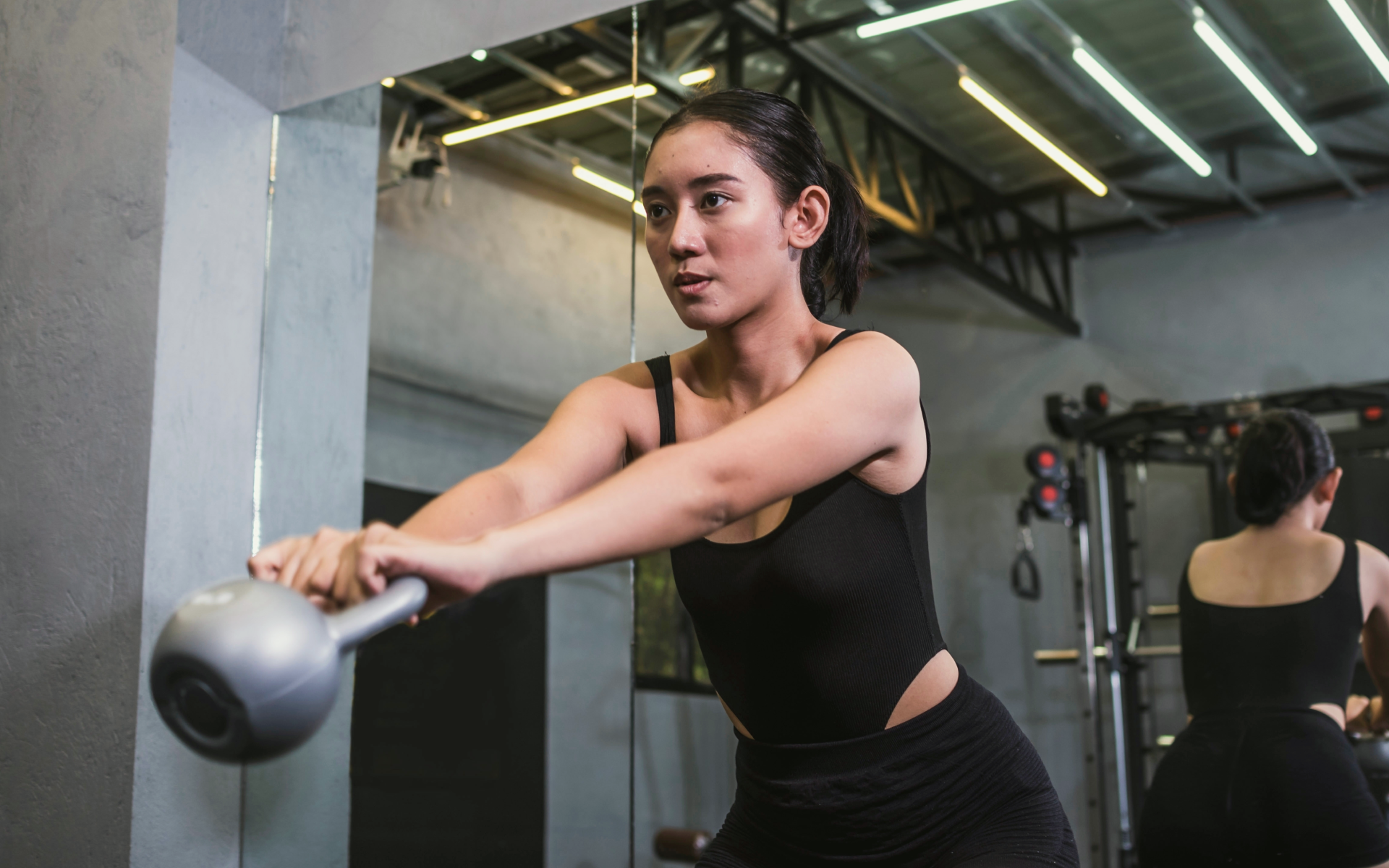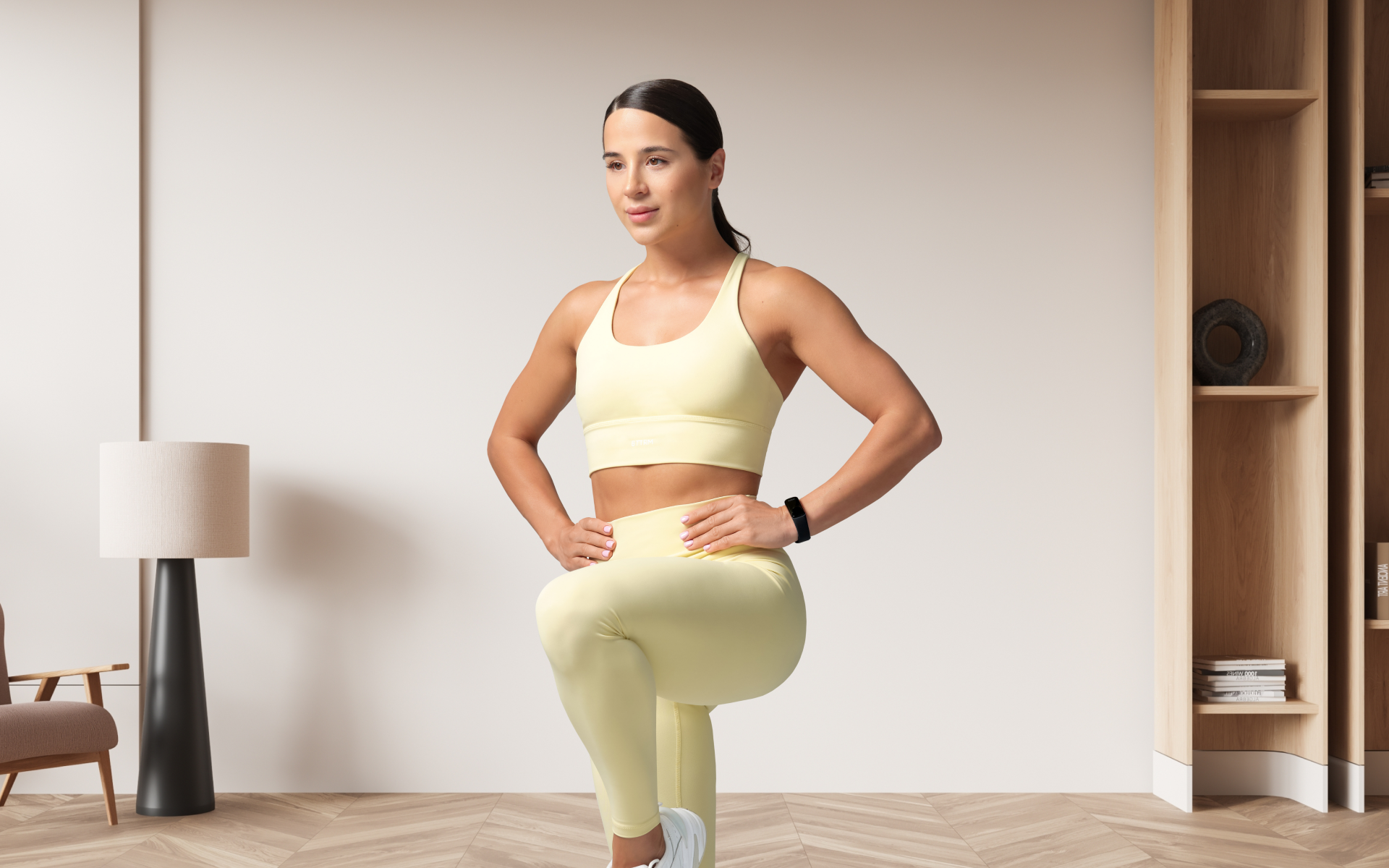There are many misconceptions about bodyweight workouts. Some believe they are only for those who’ve never gone to a gym. Others will say they are ineffective for muscle growth and strength. There are even those who think that these workouts lack variety and intensity.
Truth is, a bodyweight workout can be a highly effective way to build muscle and improve fitness. It could be the step forward from being sedentary to achieving peak physical condition (5).
Sure, beginners can start with this workout as their way to ease into fitness. But even the seasoned athletes are finding value in them. Think of planks and their core-strengthening prowess and the explosive power you can gain from plyometric exercises.
That said, here’s a comprehensive guide to a basic bodyweight workout that targets every major muscle group and can be modified to suit any fitness level.
Can I Get In Shape With Just Bodyweight Workouts?
Yes, you can get in shape by consistently practising bodyweight workouts. Bodyweight workouts use your own body as resistance, which can be just as challenging as traditional weightlifting.
In fact, many fitness experts argue that bodyweight exercises are more functional and realistic for everyday movements, when compared to lifting weights. Functional fitness is all about enhancing your ability to do everyday tasks. Your body weight is the main factor in completing these tasks, so bodyweight workouts are a great option for day to day life.
Additionally, bodyweight workouts offer a range of benefits such as (4):
- Improved mobility and flexibility
- Increased muscular endurance
- Better body coordination and balance
- Lower risk of injury (since you’re using your own bodyweight and not an external load)
- Convenience and cost-effectiveness (no need for expensive equipment or gym memberships)
Bodyweight Workouts Improve Both Mobility and Flexibility
Mobility refers to the ability to move a joint through its full range of motion, while flexibility refers to the lengthening of muscles.
Improving both mobility and flexibility is crucial for overall fitness and daily life, as it allows you to move more efficiently and reduces the risk of injury. Improving these functions will also enhance your performance in other physical activities (7).
When you perform bodyweight exercises, you are constantly moving your joints and muscles through various ranges of motion. This helps to improve overall mobility and flexibility in your body (4). In addition, many bodyweight workouts, such as yoga and Pilates, specifically focus on improving flexibility.
Bodyweight Workouts Can Be Modified for Any Fitness Level
One of the best things about bodyweight workouts is that they can be modified to accommodate any fitness level (5).
For beginners, you can start with easier variations of exercises and gradually increase intensity as you progress. More advanced athletes can add weight vests or resistance bands to make bodyweight exercises more challenging.
In addition, many bodyweight workouts can be easily adjusted to fit your specific fitness goals. Want to focus on building strength? Incorporate more challenging variations and fewer reps. Looking to improve endurance? Increase the number of reps and decrease rest time between sets.
Customizing your routine in this way can motivate you to be more consistent because:
- You won’t easily get bored from doing the same routine every day
- You can push yourself at your own pace which can help to avoid potential injuries
- It allows you to work towards specific fitness goals, potentially making it easier to track progress and see results.
Intense sweat sessions, working weight loss tips, lip-smacking recipes come in one package with the BetterMe app. And all of it is at your fingertips, start transforming your life now!
You’ll Improve Your Balance and Coordination
One underrated aspect of fitness is balance and coordination. These skills are essential for everyday activities like walking, reaching for objects, and maintaining proper posture (5).
Bodyweight exercises require you to engage multiple muscle groups at once, which helps improve overall body coordination. They also challenge core muscles, which are responsible for maintaining balance (8).
Furthermore, many bodyweight exercises involve unilateral movements (working one side of the body at a time). This can help you identify and correct any muscle imbalances, which contributes to better overall balance and coordination.
Bodyweight Workouts Pose a Lower Injury Risk
A valid concern for many when starting a new exercise routine is the risk of injury. Many things could go wrong; you could drop a weight on your foot, pull a muscle while lifting heavy weights, or strain your back from improper form.
With bodyweight workouts, the risk of injury is significantly lower because you’re only using your own bodyweight as resistance. This means that there’s less strain and pressure on joints and muscles (5).
Without a weight, your mind can also be more focused on maintaining proper form, reducing the risk of injury due to poor technique. As long as you listen to your body and take breaks when needed, bodyweight workouts can be a safer option for exercise.
Bodyweight Workouts Are Convenient and Cost Effective
Getting fit requires you to commit time and effort, which can be challenging when balancing a busy schedule. However, bodyweight workouts offer convenience, as you can do them anytime and anywhere. You don’t need to spend money on expensive gym memberships or equipment.
Bodyweight exercises also provide a full-body workout in one session, making them efficient for those with limited time. Plus, the variety of exercises available means that you can switch up your routine and keep it interesting without additional costs.
What Are The Disadvantages of Bodyweight Exercises?
While bodyweight exercises offer many benefits, there are some drawbacks to keep in mind. These include:
Limited Progressive Overload
Progressive overload is crucial for muscle growth and strength (3). In weight training, you can simply add more weight. However, in bodyweight training:
- Increasing resistance requires more complex variations (e.g., moving from regular push-ups to one-arm push-ups) (2).
- These variations might be difficult to achieve without a significant skill level, potentially limiting growth.
Without the ability to easily and progressively increase resistance, some people might find it challenging to make continuous gains.
Plateau Potential
Hitting a plateau can happen when your body adapts to workout intensity, slowing progress:
- Without new challenges, muscles may not grow as effectively.
- Advanced practitioners might find it hard to keep progressing with just bodyweight exercises, needing additional resistance or variety to keep improving.
Overcoming plateaus often requires creative approaches or introducing external resistance, which might not always be feasible.
Lower Maximal Strength Gains
For those aiming to maximize strength, bodyweight exercises might not suffice:
- Heavy lifting allows for greater maximal strength gains due to higher loads.
- Bodyweight exercises like push-ups or squats can become less effective once a certain strength level is achieved.
To reach peak strength, incorporating weights or resistance bands could be necessary alongside bodyweight exercises.
Read more: Calisthenics Warm Up 101: Bodyweight Exercises To Get Your Blood Flowing Before Your Workout
Skill and Knowledge Requirements
Performing advanced bodyweight exercises safely and effectively requires good form and technique:
- Poor technique increases the risk of injury.
- Some exercises, like handstands or muscle-ups, require a significant understanding of mechanics and practice.
Without proper guidance, individuals might struggle to perform exercises correctly, leading to suboptimal results or injury.
Targeting Specific Muscles
Isolating specific muscles can be more challenging with bodyweight exercises:
- Exercises like curls or hamstring curls are easier with weights.
- Bodyweight options might require more complex movements or do not isolate muscles as efficiently.
This limitation can make it harder to address specific muscle imbalances or weaknesses.
Motivation and Variety
Maintaining motivation can be harder with bodyweight routines:
- The lack of variety compared to gym equipment can lead to boredom.
- Some individuals find it less exciting to repeat similar bodyweight movements.
Keeping workouts interesting requires creativity and variation, which might be challenging without access to diverse equipment.
In a previous post on, The Best Bodyweight Glute Exercises , we mentioned ways to add variety and challenge to bodyweight workouts. It’s essential to find what works for you and keep your routine interesting so that you are able to stay engaged with it for the long run.
Is 20 Minutes of Bodyweight Workout Enough?
A 20-minute bodyweight workout can be effective, especially if done consistently and with sufficient intensity. It offers numerous health benefits and fits well into a busy lifestyle. However, individual fitness levels and specific goals may require adjusting the workout duration or intensity over time.
Here’s what to consider when deciding on a bodyweight workout duration:
- Fitness Level: Beginners might find it difficult to maintain high-intensity exercises for 20 minutes and may need longer rest periods.
This translates to more time needed to complete their workout. On the other hand, advanced practitioners with higher fitness levels might perform multiple sets and reps faster, making a 20-minute routine more manageable.
- Workout Intensity: The intensity of your workout can also affect how long it should be. High-intensity workouts (HIIT) are shorter but require more effort during the exercise period. Low-intensity workouts might not require as much rest in between and can last longer.
- Specific Goals: Your fitness goals play a significant role in determining the duration of your workout. If you’re looking to improve endurance, a longer workout might be necessary. For building strength, shorter but more intense workouts can be enough.
Ultimately, the most important factor is consistency. Whether it’s a 20-minute bodyweight workout or an hour-long gym session, sticking to a regular exercise routine is key for achieving any fitness goal.
Whether you’re looking to simply pep up your fitness routine, jazz up your diet with mouth-watering low-calorie recipes or want to get your act together and significantly drop that number on your scale – BetterMe app has got you covered! Improve your body and revamp your life with us!
Is Bodyweight Training Good for Beginners?
Bodyweight training is an excellent way for beginners to get started with building strength and improving overall fitness.
Bodyweight exercises use your own body as resistance, reducing the risk of injury caused by lifting heavy weights with improper form (4).
Perhaps most importantly, bodyweight training allows beginners to develop a strong foundation of strength and good movement patterns, before progressing to more advanced exercises or adding additional resistance (5).
This is especially beneficial for those who may not have the required coordination and technique to perform complex weightlifting movements right away.
Some other benefits of bodyweight training for beginners include:
- The ability to easily modify exercises based on individual fitness levels.
- The convenience of being able to do workouts anywhere, anytime without needing access to a gym or equipment.
- Improved body awareness and control as you learn to manipulate your own body weight.
Here’s a full body bodyweight workout (no equipment ) that’s beginner friendly.You might think that a basic bodyweight workout at home will be too easy, but you might be surprised at how challenging it can be.
The workout has 7 exercises, each targeting a different muscle group, and can be completed in 20-30 minutes. You can perform 2-3 sets of each exercise with 30 seconds to a minute rest in between. Remember to maintain proper form throughout the entire workout.
Push-Ups: Targets chest, shoulders, triceps, and core muscles.
- Start in a high plank position with your arms extended, hands shoulder-width apart and core engaged.
- Lower your body and bend your elbows until your chest touches the ground, then push back up to the starting position.
Squats: Targets quads, glutes, hamstrings, and core muscles.
- Stand with feet shoulder-width apart and toes pointing slightly outwards.
- Bend your knees and lower your body as if sitting back into a chair until your thighs are parallel to the ground.
- Push up through your heels to return to the starting position.
Our bodyweight lower body workout article has more lower body bodyweight workouts you can try.
Lunges: Targets quads, glutes, hamstrings, and core muscles.
- Stand with feet hip-width apart and take a big step forward with one leg while keeping your torso upright.
- Lower your body until both knees are at 90-degree angles, then push back up to the starting position.
- Alternate legs for each rep.
Glute Bridges: Targets glutes, hamstrings, and core muscles.
- Lie on your back with knees bent and feet flat on the ground, hip-width apart.
- Squeeze your glutes and raise your hips until your body forms a straight line from knees to shoulders.
- With your core engaged, pause at the top, then lower back down to the starting position.
Read more: 30-Minute Bodyweight Beach Workout for Beginners
Forearm Plank: Targets core muscles.
- Start in a high plank position with arms extended, hands shoulder-width apart, and core engaged.
- Hold this position for 30 seconds to a minute, keeping your body in a straight line from head to heels.
Mountain Climbers: Targets shoulders, arms, abs, and legs.
- Start in a high plank position with arms extended, hands shoulder-width apart, and core engaged.
- Bring one knee towards your chest, then quickly switch legs while engaging your core and keeping your hips low.
- Each switch counts as one rep.
Burpees: Targets full body muscles. Has a high cardio element.
- Start in a standing position, then squat down and place your hands on the ground.
- Jump both feet back into a high plank position.
- Quickly jump both feet back in towards your hands, then explosively jump up towards the ceiling with arms raised above your head.
- Land softly back in the starting position and repeat for the desired number of reps.
Remember to listen to your body and modify any exercises as needed, especially if you’re just starting out. As you continue with this workout routine, try increasing the number of sets or reps over time to gradually challenge yourself and make progress towards your fitness goals.
Our Micro Workout Challenge is a great way to start incorporating bodyweight exercises into your daily routine. Set aside 5-10 minutes every day (or a few times a week) and challenge yourself to complete as many reps of various bodyweight exercises as possible in that time frame.
FAQs
Can I Get Ripped With Bodyweight Exercises?
Getting ripped requires a combination of regular exercise, proper nutrition, and consistent effort. While bodyweight exercises at home can help build muscle mass and improve strength, it’s important to also focus on your diet and consider adding additional resistance as you progress in your fitness journey.
Can I Get Toned With Bodyweight?
Getting toned means having a healthy balance of muscle mass and low body fat. Bodyweight exercises can certainly help you achieve this, as they target multiple muscle groups and can be combined with cardio for improved fat burning (6). However, it’s important to have a balanced approach that includes proper nutrition and overall fitness to see the best results.
Is It Okay To Do Bodyweight Training Everyday?
It’s not recommended to do intense bodyweight training every day, as your muscles need time to recover and grow (1). However, incorporating light bodyweight exercises into your daily routine, such as stretching or gentle movements, can be beneficial for overall mobility and muscle activation. It’s important to listen to your body and adjust your workout schedule accordingly.
Is It Okay To Lift Light Weights Everyday?
Lifting light weights every day is not recommended, as your muscles also need time to rest and recover. It’s important to have a balanced approach and allow for adequate recovery time between workouts. Rather than lifting weights every day, try incorporating active rest days with low-impact activities such as yoga or swimming (1).
How Many Times Per Week Should I Do Bodyweight Exercises?
You can do bodyweight exercises 3-4 times per week, with rest days in between. It’s important to have a balanced approach and allow for adequate recovery time so your muscles can repair and grow.
Provided you are using proper form and not overdoing it, incorporating bodyweight exercises into your weekly workout routine can be highly effective for improving strength and overall fitness.
How Many Pushups a Day Should I Do To Get Ripped?
A good starting point could be 3 sets of 10-15 reps, with a minute rest in between each set. As you progress and get stronger, try increasing the number of reps or sets to continue challenging yourself.
A maximum of 3-4 sets per day is recommended, with rest days in between to allow for muscle recovery. Remember to also focus on your nutrition and overall fitness routine for best results.
The Bottom Line
A basic bodyweight workout plan can make the difference between reaching your fitness goals and staying in stagnant doldrums.
By incorporating these simple but effective exercises into your routine you can improve overall strength, build muscle mass, and increase endurance without the need for expensive equipment or gym memberships. Just remember to listen to your body, make adjustments as needed, and stay consistent with your efforts.
DISCLAIMER:
This article is intended for general informational purposes only and does not serve to address individual circumstances. It is not a substitute for professional advice or help and should not be relied on for making any kind of decision-making. Any action taken as a direct or indirect result of the information in this article is entirely at your own risk and is your sole responsibility.
BetterMe, its content staff, and its medical advisors accept no responsibility for inaccuracies, errors, misstatements, inconsistencies, or omissions and specifically disclaim any liability, loss or risk, personal, professional or otherwise, which may be incurred as a consequence, directly or indirectly, of the use and/or application of any content.
You should always seek the advice of your physician or other qualified health provider with any questions you may have regarding a medical condition or your specific situation. Never disregard professional medical advice or delay seeking it because of BetterMe content. If you suspect or think you may have a medical emergency, call your doctor.
SOURCES:
- Making gains with your rest days (2018,colorado.edu)
- Progressive overload without progressing load? The effects of load or repetition progression on muscular adaptations (2022,nih.gov)
- Progression of volume load and muscular adaptation during resistance exercise (2014,nih.gov)
- Top 10 Benefits Of Bodyweight Training (2023,sochi.edu)
- The advantages of body-weight exercise (2022,harvard.edu)
- The benefits of adding cross training to your exercise routine (2018,msu.edu)
- The Importance of Flexibility and Mobility (n,d,psu.edu)
- The real-world benefits of strengthening your core (2012,harvard.edu)
